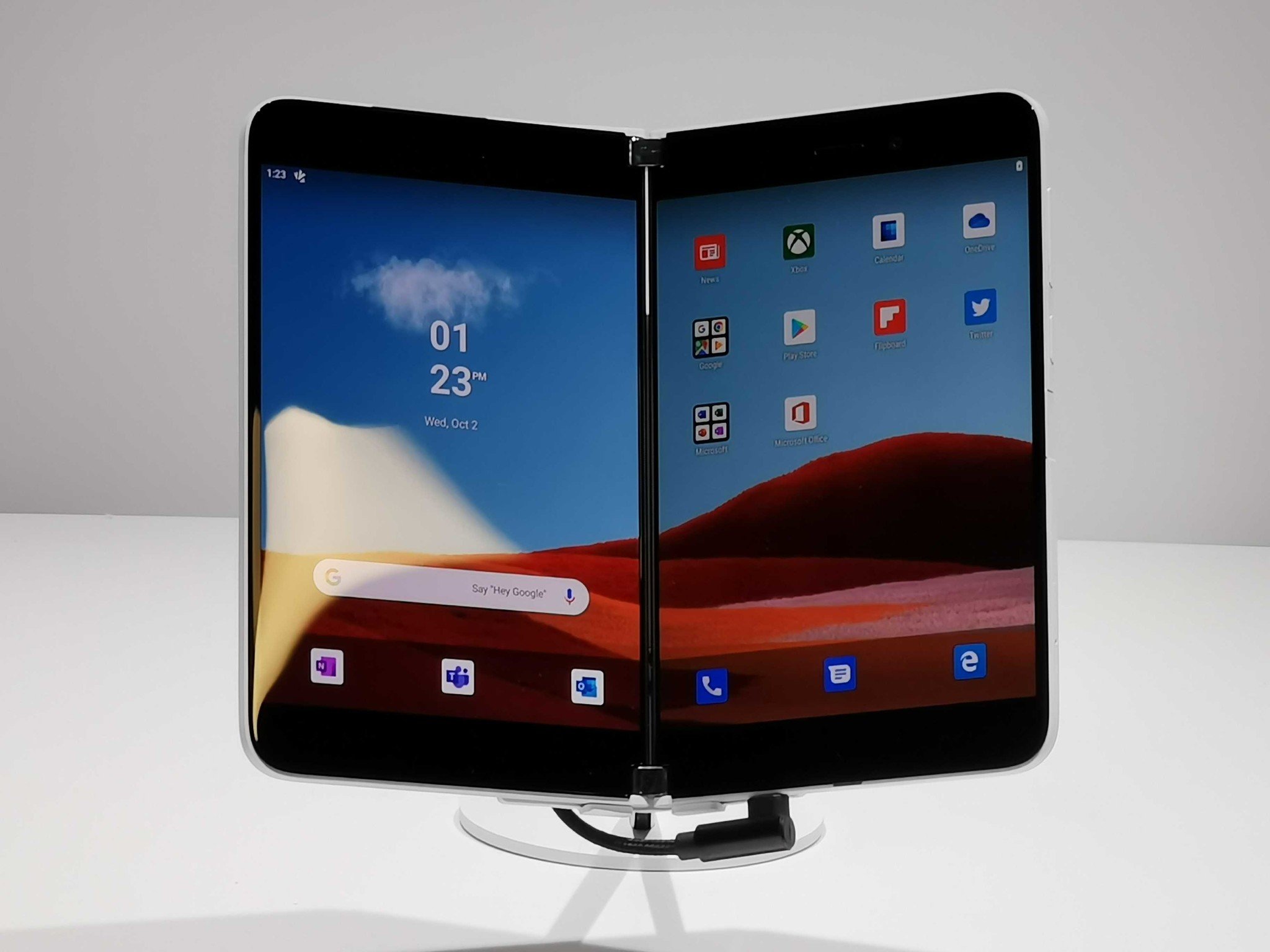Microsoft discusses developing for dual-screen devices like Surface Neo and Surface Duo
Microsoft wants developers to be able to optimize experiences for dual-screen devices.

What you need to know
- A new blog post from Microsoft discusses developing for dual-screen devices.
- The blog discusses developing for the web and optimizing apps.
- The blog discusses both Windows 10X and Android.
A new blog post from Microsoft discusses developing for dual-screen devices. It covers how developers will be able to get website and app code to work across dual-screen devices, including the Surface Duo and Surface Neo. The post also helps developers who want to adopt early get in touch with the right channels.
The Surface Neo and Surface Duo introduce a relatively new form factor of devices, folding devices that utilize two separate screens. Because of this, users and developers will view the device differently than devices like the Galaxy Fold. Rather than having a single canvas to work on that can expand, the Surface Neo and Surface Duo bring two separate canvases that can work in conjunction or completely separately.
While this form factor is different than most devices on the market, developers won't have to start from scratch to get their websites and apps to work. Microsoft's blog post states, "Your code is important, and you will not have to start anew on these devices. Our goal is to make it as easy as possible for your existing websites and apps to work well on dual-screen devices." On Windows 10X devices, developers will be able to utilize current tools for the web, including UWP and Win32. On Android, websites and apps will work on a single screen.
Surface Neo and Duo offer a unique — and challenging — opportunity for developers
In order to take advantage of the dual-screen nature of upcoming devices, Microsoft will identify "key postures and layouts across dual-screen and foldable PCs so that you can take advantage of both." Microsoft will also work to create a "common model layered onto existing platform-specific tools and frameworks for Windows and Android."
Development for dual-screen devices is in relatively early stages. Microsoft asks developers that want to adopt the technology early to reach out to dualscreendev@microsoft.com.
All the latest news, reviews, and guides for Windows and Xbox diehards.

Sean Endicott is a news writer and apps editor for Windows Central with 11+ years of experience. A Nottingham Trent journalism graduate, Sean has covered the industry’s arc from the Lumia era to the launch of Windows 11 and generative AI. Having started at Thrifter, he uses his expertise in price tracking to help readers find genuine hardware value.
Beyond tech news, Sean is a UK sports media pioneer. In 2017, he became one of the first to stream via smartphone and is an expert in AP Capture systems. A tech-forward coach, he was named 2024 BAFA Youth Coach of the Year. He is focused on using technology—from AI to Clipchamp—to gain a practical edge.
